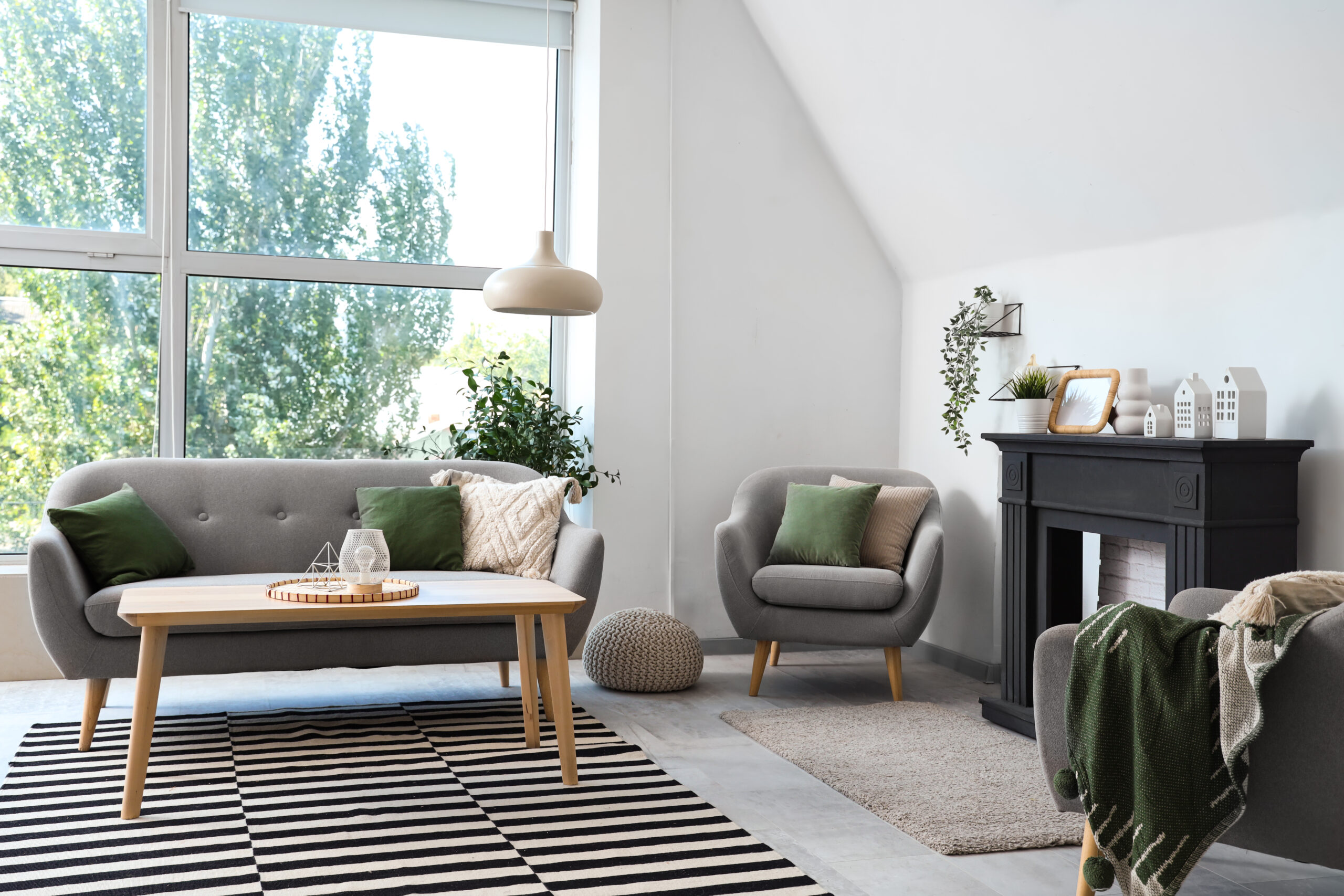Comfortable living requires the right size apartment. Not enough space might make you feel cramped; too much space might seem high-maintenance. That’s why it’s important to balance affordability and adequate space according to your current and future needs. Your daily routine, storage requirements and potential lifestyle changes should play a role in the decision-making process. Knowing these factors can help you determine the apartment size that best suits you.

Determining the Right Apartment Size
Start by considering your lifestyle and needs when deciding on the number of rooms in your apartment. The most common apartment sizes include studios, one-bedroom, two-bedroom and occasionally three-bedroom apartments. Some configurations even include dens, often described as “one- or two-bedroom plus den.” Three-bedrooms sometimes come in the form of multi-level townhomes.
Factors to Consider When Choosing an Apartment Size
Here are several tips to help you determine what size apartment you need, with examples of possible situations you might encounter.
The Basics
First and foremost, the right size apartment should meet your basic requirements for bedrooms and bathrooms. For those with roommates, children or significant others, choose a layout that will make everyone comfortable. Consider privacy needs and work-at-home situations.
How Will You Use the Space?
Next, consider your lifestyle and how you’ll use the space. Do you entertain often or host a lot of overnight guests? Are you planning to start a family or move in with a significant other? Also, take stock of your belongings, especially if you have specific furniture you want to keep. Double-check that your furniture fits by using online layout planners like Room Styler or Plan Your Room, or explore furnished apartment options.
Take a Virtual Tour
If you can’t visit the space ahead of time, see if the management companies offer virtual tours. These provide a convenient way to inspect apartments from afar. Examine the layout, features and floor plan dimensions through virtual tours to make informed decisions.
Make a List of Pros and Cons
Weigh the pros and cons of each living option. Evaluate factors like square footage, monthly rent and community amenities. For instance, a smaller apartment might be appealing if it comes with onsite fitness centers, laundry rooms or other perks.
Be Mindful of Your Budget
Stick to your budget throughout the decision-making process. Larger apartments don’t just have more expensive rents; they often have more expensive utility bills, too. Also, consider potential changes in your circumstances, such as a roommate moving out or a significant other moving in. Choose an apartment you can afford now and in the future.
Measuring Apartment Size
Accurately measuring the size of an apartment can help you make an informed decision. Follow these steps to ensure you get precise measurements.
Step 1: Obtain a Floor Plan
Start by obtaining a floor plan or sketch from the property manager. This will allow you to write down your measurements on a visual representation of your potential living space.
Step 2: Calculate Square Footage
For each room, use a reliable tape measure to determine the length and width. Multiply these dimensions to calculate the square footage of individual spaces.
Step 3: Address Irregular Shapes
For irregularly shaped rooms, break them into smaller, manageable sections. Calculate the square footage for each section and then sum them up for the total area.
Step 4: Account for Protrusions
As you measure, look for any protruding walls or alcoves. Adjust your measurements accordingly to get a more precise understanding of the living space. For example, a built-in shelf on a wall will prevent you from putting a tall bookcase against it.
Step 5: Utilize Laser Distance Measurers
For added precision, consider using laser distance measurers. Measure from wall to wall, excluding non-living spaces like closets, for more accurate results.
Step 6: Measure Exterior Walls
For a comprehensive view, measure the apartment’s exterior walls. This provides a more holistic understanding of the total size of the living space.
Understanding Apartment Square Footage
Square footage refers to the total area of the apartment, but you should know how to translate it into a practical understanding of living conditions. Consider factors like room layout, furniture placement and storage space. This allows you to gauge how the square footage will influence your day-to-day experience. A smaller, well-designed space might feel more comfortable than a larger one with an inefficient layout.

Types of Apartment Sizes: What To Expect
Every type of apartment has its advantages and disadvantages. We’ll take an in-depth look at what to expect.
Studio Apartments
Studios are compact living spaces typically ranging from 350 to 600 square feet. They offer an open layout without a distinct bedroom, making them ideal for minimalists. Pros include cost-effectiveness and easy maintenance. However, the limited space could feel confining and storage may be a challenge.
One-Bedroom Apartments
One-bedroom apartments usually span between 550 and 1,000 square feet. As suggested by the name, they feature a separate bedroom for increased privacy and space. Many people love the separate living space and bedroom that helps maintain privacy. On the downside, they might be too small for more than two people or require more effort to maintain for individuals.
Two-Bedroom Apartments
At typically 1,000 square feet and larger, two-bedroom apartments can accommodate additional people or those needing extra space. If you only need one bedroom, you’ll have additional space for guests, home offices or storage. However, two-bedrooms can be costlier and tend to have higher utility bills.
Three-Bedroom Apartments
Offering approximately 1,200 square feet and up, three-bedroom apartments are great for larger groups. Advantages include ample space for multiple occupants and plenty of versatility. Downsides may involve higher costs (including more furniture and more utility usage) and increased maintenance, like cleaning.

What Size Apartment Should I Get?
The right size apartment for you is a personal choice influenced by numerous factors. Your lifestyle, budget and future plans all play roles in determining your ideal living space. Studios may appeal to minimalists, one-bedroom apartments offer privacy, two-bedrooms cater to small families and three-bedrooms accommodate larger households. Also, consider the practical aspects, like furniture fit and storage and use accurate measurements to visualize the space.
Find the Right Size Apartment with Southern Management
Whether you’re looking for a minimalist studio or a three-bedroom townhome, you deserve to love where you live! Choose the right property management company to ensure a happy living situation for years to come. With Southern Management, you can confidently sign a lease without seeing the unit in person first. That’s how much people love our apartments—and our management style.
With 75 apartment communities and more than 25,000 apartment homes, Southern Management can help you find the right space to call home. Take a virtual tour and contact us to discuss availability, pricing and lease options today!